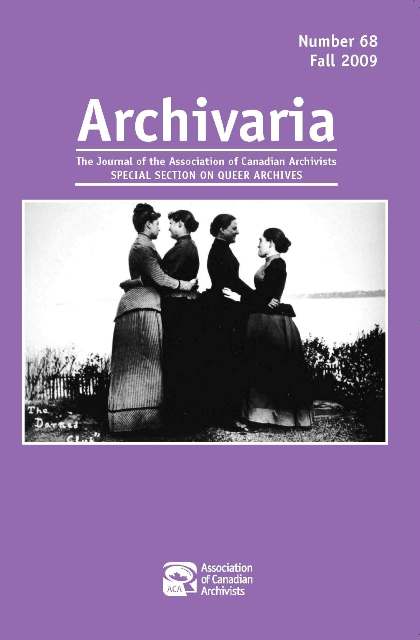The 1942 Same-sex Trials in Edmonton: On the State’s Repression of Sexual Minorities, Archives, and Human Rights in Canada
Abstract
In 1942 the RCMP and Edmonton’s municipal constabulary organized a dragnet operation involving the investigation, arraignment, trial, and imprisonment of at least six of ten men charged with same-sex activities in the city. The arrests and trials generated widespread publicity, pronouncements of opprobrium by politicians, and a “moral panic” among the general public. In several cases, the private correspondence of the accused men was seized and used to induce confessions, and then introduced in court as corroborating evidence to secure their convictions. Characterizing same-sex sexuality as “bestiality” and “perversion,” members of the judiciary undermined assertions that the defendants could receive a fair trial in Edmonton in that period. The paper concludes with an assessment of the value of legal records for the study of the history of same sex experience and its historical marginalization in this country. The State’s repression of sexual minorities as documented in the criminal case files of the Judicial District of Edmonton at the Provincial Archives of Alberta reveals the fragility of human rights and civil liberties prior to the inauguration of the Charter of Rights and Freedoms within Canada’s Constitution Act of 1982. It is argued that preserving and making accessible archival court and police records is a critical step toward maintaining knowledge and awareness of past abuses, thereby making a tangible contribution toward safeguarding human rights and civil liberties in Canada.
RÉSUMÉ
En 1942, la GRC et la force constabulaire de la ville d’Edmonton ont organisé une opération coup de filet qui a mené à l’enquête, à l’accusation, au procès et à l’emprisonnement d’au moins six des dix hommes inculpés de rapports sexuels de même sexe dans la ville. Les arrestations et les procès ont généré une publicité étendue, des déclarations d’opprobre de la part des politiciens et une « panique morale » chez le grand public. Dans plusieurs cas, la correspondance privée des hommes accusés a été saisie, on s’en est servi pour extraire des confessions, puis elle a été présentée en cour comme preuve à l’appui des accusations dans le but d’assurer une condamnation. Décrivant la sexualité de même sexe de « bestialité » et de « perversion », des membres du système judiciaire ont nuit à la possibilité pour les accusés d’obtenir un procès impartial à Edmonton à cette époque. L’article se termine par une analyse de la valeur des documents légaux pour faire l’étude de l’histoire des rapports de même sexe au Canada, ainsi que sa marginalisation historique. La répression des minorités sexuelles par l’État, telle que documentée dans les dossiers de cas criminels du District judiciaire d’Edmonton aux Provincial Archives of Alberta, révèle la fragilité des droits humains et des libertés civiles avant l’introduction de la Charte canadienne des droits et libertés, enchâssée dans la Loi constitutionnelle de 1982. L’auteur soutient que la conservation et la diffusion des documents d’archives de la cour et de la police est cruciale pour connaître et être sensibilisé aux abus du passé, contribuant ainsi – de façon assez tangible – à la sauvegarde des droits humains et des libertés civiles au Canada.
Authors of manuscripts accepted for publication retain copyright in their work. They are required to sign the Agreement on Authors' Rights and Responsibilities that permits Archivaria to publish and disseminate the work in print and electronically. In the same agreement, authors are required to confirm that "the material submitted for publication in Archivaria, both in its paper and electronic versions, including reproductions of other works (e.g. photographs, maps, etc.) does not infringe upon any existing copyright." Authors of manuscripts accepted for publication retain copyright in their work and are able to publish their articles in institutional repositories or elsewhere as long as the piece is posted after its original appearance on archivaria.ca. Any reproduction within one year following the date of this agreement requires the permission of the General Editor.





